Trees are a vital part of the landscape, adding beauty, shade, and environmental value to any property. However, like all living things, trees are vulnerable to disease, decay, and structural decline over time. When decay sets in, it can compromise both the health and stability of the tree, posing potential risks to people and property. Understanding the causes and signs of decay is essential, but dealing with it safely requires the expertise of trained professionals. EM Tree Surgery Portishead explains the importance of recognising tree decay early and why professional tree surgery is often necessary to manage it effectively.
What Is Tree Decay?
Tree decay is the process of decomposition that occurs when fungi or bacteria break down the wood within a tree. This usually begins when the outer bark is damaged—whether by storms, mechanical injury, or disease—allowing pathogens to enter and start deteriorating the internal tissues.
While decay is a natural part of a tree’s ageing process, it becomes a concern when it affects the structural integrity of the trunk, branches, or roots. In advanced stages, it can lead to weakened limbs, hollow sections, or even complete tree failure.
Common Causes of Tree Decay
Understanding what leads to decay helps property owners in Portishead take preventive measures to protect their trees. Some of the most common causes include:
- Fungal infections: Fungi such as honey fungus or bracket fungus feed on decaying wood, accelerating the deterioration of the tree’s internal structure.
- Mechanical damage: Cuts from lawn equipment, vehicle impacts, or construction work can expose inner wood to infection.
- Poor pruning practices: Incorrect or excessive pruning can create open wounds that act as entry points for pathogens.
- Waterlogging or drought: Extreme soil conditions stress trees and make them more susceptible to rot and decay.
- Ageing: Older trees naturally develop internal decay as part of the natural lifecycle.
While some decay may not pose an immediate threat, progressive rot can quickly weaken a tree and make it hazardous without visible warning signs.
How to Identify Signs of Tree Decay
Spotting decay early allows for timely intervention before the problem worsens. Homeowners should look out for the following signs:
- Mushrooms or fungal growths on the trunk or base of the tree.
- Cracks, cavities, or hollows in the trunk or large branches.
- Dead or dying limbs that fail to produce leaves or buds in spring.
- Soft or spongy wood when touched near damaged areas.
- Unusual lean or instability suggesting internal weakness.
- Discoloured bark or oozing sap indicating infection beneath the surface.
If any of these symptoms appear, it’s important to seek an expert assessment from EM Tree Surgery Portishead. Professional arborists can identify the extent of the decay and recommend the safest and most effective course of action.
Why Professional Tree Surgery Is Essential
Tree decay isn’t always visible from the outside, and assessing its severity requires specialist knowledge and equipment. Attempting to treat or remove decayed trees without the right expertise can be dangerous. Professional tree surgeons are trained to diagnose, manage, and treat decay while preserving as much of the tree’s health and structure as possible.
The Role of a Professional Tree Surgeon
A qualified arborist can:
- Conduct comprehensive tree inspections to determine internal decay using visual assessment and, where necessary, decay detection tools.
- Carry out targeted pruning to remove affected limbs and reduce stress on the tree.
- Provide crown reduction or reshaping to maintain balance and safety.
- Advise on disease management, helping prevent further spread of infection.
- Safely fell trees that are beyond recovery and pose a risk to surrounding areas.
By addressing decay professionally, property owners can ensure their trees are treated in a way that promotes both safety and longevity.
The Importance of Timely Intervention
When it comes to tree decay, time is critical. Early diagnosis and treatment can prevent minor infections from spreading and causing structural failure. Left untreated, decay can spread through the trunk and roots, leading to:
- Falling branches or sudden tree collapse
- Damage to nearby property or vehicles
- Risk of injury to people and pets
- Loss of valuable landscape features
Proactive tree care from EM Tree Surgery Portishead not only reduces these risks but also preserves the health of surrounding trees, as some forms of decay and fungal disease can spread through root contact.
Preventing Tree Decay
While some factors, like age and severe weather, are unavoidable, there are several steps property owners can take to reduce the likelihood of decay:
- Avoid wounding the trunk or roots during gardening or construction.
- Keep soil conditions balanced to prevent waterlogging or drought stress.
- Ensure trees are pruned correctly by a professional to maintain proper structure.
- Remove deadwood regularly to prevent fungal colonisation.
- Schedule periodic inspections to identify early signs of decay or disease.
With professional maintenance, trees can remain strong, healthy, and visually appealing for decades.
How EM Tree Surgery Portishead Can Help
For property owners in Portishead, EM Tree Surgery Portishead offers expert assessment and care for trees affected by decay. Their team provides professional pruning, crown management, and decay treatment services tailored to each tree’s condition. With a focus on long-term health, they ensure trees are managed safely and sustainably, preserving both the beauty and safety of your outdoor environment.
Conclusion
Tree decay is a natural process but can become a serious concern when it threatens the health or stability of a tree. Recognising early signs and seeking professional help is vital for preventing further deterioration. Through expert assessment, careful pruning, and maintenance, EM Tree Surgery Portishead helps homeowners in Portishead manage tree decay effectively—restoring balance, ensuring safety, and keeping the landscape healthy and attractive for years to come.
Call us on: 01275 402 923
Click here to find out more about EM Tree Surgery Portishead
Click here to complete our contact form and see how we can help with your trees needs.

